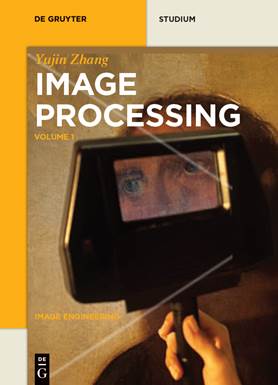|
Image Engineering Volume 1: Image Processing Yu-Jin ZHANG De GRUYTER£¬2017 |
|
|
|
ISBN: 978-3-11-052032-3, PDF ISBN: 978-3-11-052411-6, EPUB ISBN: 978-3-11-052422-2 |
|
Preface |
This book is the Volume I of "Image Engineering", which is focused on "Image Proceesing", the low-layer of image engineering. This book has grown out of the author¡¯s research experience and teaching prac-tices for full-time undergraduate and graduate students at various universities, as well as for students and engineers taking summer courses, in more than 20 years. It is prepared with students and instructors in mind with the principal objective of introducing basic concepts, theories, methodologies, and techniques of image engineering in a vivid and pragmatic manner. Image engineering is a broad subject encompassing computer science, electrical and electronic engineering, as well as mathematics, physics, physiology, and psychology. Readers of this book should have some preliminary background in one of these areas. Knowledge of linear system theory, vector algebra, probabil-ity, and random process would be beneficial but may not necessary. This book consists of eight chapters covering the main branches of image pro-cessing. It has totally 55 sections, 99 sub-sections, with 164 figures, 25 tables, and 473 numbered equations in addition to 60 examples and 96 problems (the solutions for 16 of them are provided in this book). Moreover, over 200 key ref-erences are given at the end of book for futrther study. This book can be used for the first course "Image Processing" in the course series of image engineering, for undergraduate students in the disciplines of computer science, electrical and electronic engineering, image pattern recognition, infor-mation processing, and intelligent information systems, etc. It can also be of great help to scientists and engineers doing research and development in connec-tion within related areas. Special thanks go to De Gruyter and Tsinghua University Press, and their staff members. Their kind and professional assistance are truly appreciated. Last but not least, I am deeply indebted to my wife and my daughter for their encouragement, patience, support, tolerance, and understanding during the writ-ing of this book. |
|
Contents |
Chapter 1 Introduction to Image Processing Chapter 2 Image Acquisition Chapter 3 Image Enhancement Chapter 4 Image Restoration Chapter 5 Image Reconstruction from Projections Chapter 6 Image Coding Chapter 7 Image Watermarking Chapter 8 Color Image Processing |
Back to Books ·µ»ØÊé¼® |
|---|---|
